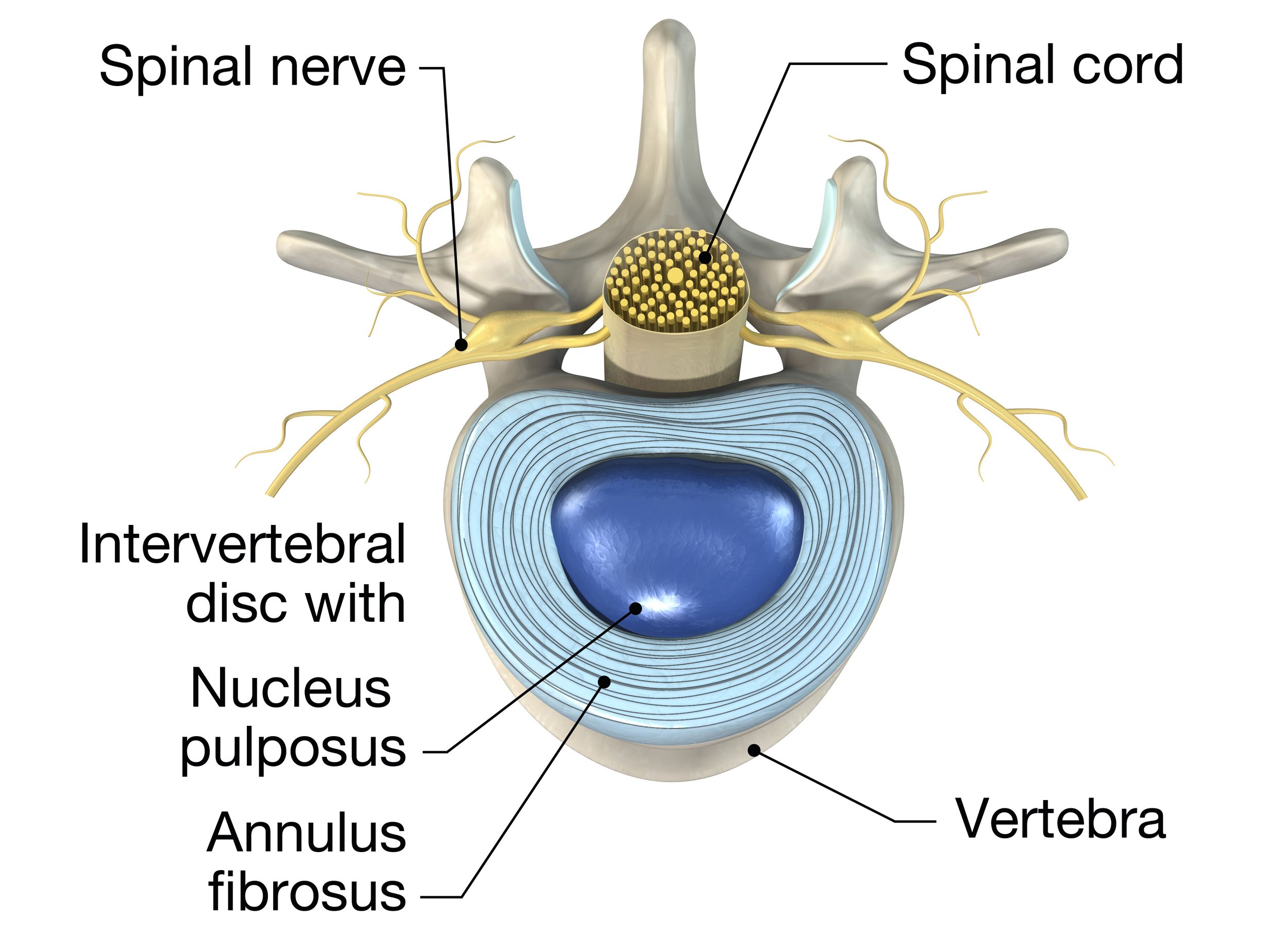
Disc Bulge Treatment
Evidence-based non-surgical treatment for spinal disc injuries is our bread and butter.
What is a disc bulge?
Disc bulges are one of the dreaded diagnostic labels for people with lower back or neck pain, and are known by many names - slipped discs, disc herniations, disc protusions. The term “disc bulge” refers to a wide variety of injuries which can occur to the discs between the bony parts of the spine. The outer layer of spinal discs is made of dense cartilage, with the middle portion containing a thick gel-like substance. With certain kinds of disc injuries, the outer layer can deform and bulge out beyond the borders of the vertebral body, and in more serious cases the inner gel can begin to leak out of the center and irritate the nerve and soft tissue structures around the spine.
What are the symptoms of disc bulges?
Symptoms vary depending on the location of the injured disc and the extent of the injury. They are most common in the lower back but can also occur in the neck, and generally have a common pattern which makes them easy to recognise:
Local pain around the area of the injured disc, be it in the neck or lower back.
Numbness, tingling and/or burning sensations through the areas supplied by the nerve/s near that region.
Weakness of the surrounding muscles, sometimes with atrophy of those muscles.
Changes in reflex responses, or signs of nerve tension during physical examination.
What causes disc bulges?
Disc bulges can arise from sudden compressive injuries to the spine, such as from lifting a heavy load, or even a relatively light load with poor technique. They can also be the result of repetitive actions and activities which place strain on the discs, and are predisposed to with poor posture or bad movement patterns which compromise the ability of the spine to distribute force through the whole unit.
Ok I have a disc bulge, so what now?
If you’ve been diagnosed with a disc bulge (or worry you might have one) then the first step is to get a thorough examination so that we can determine the extent of the injury and how to best treat it. In many cases an MRI or CT scan will be ordered to make sure any bulge isn’t compromising the delicate spinal cord or nerve structures near the injured disc.
There are some symptoms of disc injury which are medical emergencies, however these are relatively uncommon and most people diagnosed with a disc injury will never need surgery and can (and SHOULD) be managed conservatively.
Patients are often concerned that a disc bulge is a life sentence for pain and discomfort, however the reality is actually much more optimistic - one study found that to 80% of patients report feeling “excellent” or “good” following conservative (non-surgical) treatment for lower back disc injuries.
Treatment for disc bulge at Cervus
Disc bulges are a particular clinical focus for us here at Cervus, and we are uniquely equipped with some equipment which helps us to manage even very complicated spinal disc injuries with our Hill Labs Flexion Distraction table. This table allows us to create traction and mechanical decompression (or negative pressure) of discs and surrounding tissues to physically draw protruded disc material away from sensitive nerves and soft tissues and promote faster healing.
Additionally, we utilise a wide range of careful, precise therapies to help decrease the hypersensitivity of tissues which have been inflamed and irritated so that we can relieve pain as quickly as possible. This includes the application of natural (non-pharmacological) topical agents to help irritated nerves to recover, as well as tailored exercises (unique to each kind of disc injury) to strengthen and support the surrounding spinal structures and reduce the load on the discs so they have a chance to heal.
This is something we have become known for at Cervus, and we know all about how these kinds of injuries interefere with sleep, work and hobbies and are well-versed in helping our patients to find ways to manage these activities during their recovery process.
Do I need X-rays or an MRI?
In most cases, no. Risk factors for potential medical emergencies can be readily identified from a thorough physical examination, and in the majority of cases we can begin treatment on the same day without imaging. Even in cases where imaging is necessary (and it sometimes is), there is often something we can do to safely ease the pain while an MRI is organised.
This is good news - it means you can avoid paying for unnecessary services and start treatment earlier!
Need some professional help? We do this everyday.
References:
Benoist M. (2002). The natural history of lumbar disc herniation and radiculopathy. Joint bone spine, 69(2), 155–160. https://doi.org/10.1016/s1297-319x(02)00385-8






